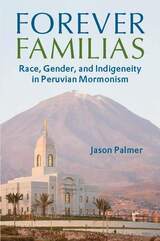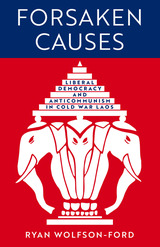605 scholarly books by Russell Sage Foundation and 40
start with A
605 scholarly books by Russell Sage Foundation and 40
605 scholarly books by Russell Sage Foundation
40 start with A start with A
40 start with A start with A

Abandoned Families
Social Isolation in the Twenty-First Century
Kristin S. Seefeldt
Russell Sage Foundation, 2016
Choosing whom to marry involves more than emotion, as racial politics, cultural mores, and local demographics all shape romantic choices. In Marriage Vows and Racial Choices, sociologist Jessica Vasquez-Tokos explores the decisions of Latinos who marry either within or outside of their racial and ethnic groups. Drawing from in-depth interviews with nearly 50 couples, she examines their marital choices and how these unions influence their identities as Americans.
Vasquez-Tokos finds that their experiences in childhood, adolescence, and young adulthood shape their perceptions of race, which in turn influence their romantic expectations. Most Latinos marry other Latinos, but those who intermarry tend to marry whites. She finds that some Latina women who had domineering fathers assumed that most Latino men shared this trait and gravitated toward white men who differed from their fathers. Other Latina respondents who married white men fused ideas of race and class and perceived whites as higher status and considered themselves to be “marrying up.” Latinos who married non-Latino minorities—African Americans, Asian Americans, and Native Americans—often sought out non-white partners because they shared similar experiences of racial marginalization. Latinos who married Latinos of a different national origin expressed a desire for shared cultural commonalities with their partners, but—like those who married whites—often associated their own national-origin groups with oppressive gender roles.
Vasquez-Tokos also investigates how racial and cultural identities are maintained or altered for the respondents’ children. Within Latino-white marriages, biculturalism—in contrast with Latinos adopting a white “American” identity—is likely to emerge. For instance, white women who married Latino men often embraced aspects of Latino culture and passed it along to their children. Yet, for these children, upholding Latino cultural ties depended on their proximity to other Latinos, particularly extended family members. Both location and family relationships shape how parents and children from interracial families understand themselves culturally.
As interracial marriages become more common, Marriage Vows and Racial Choices shows how race, gender, and class influence our marital choices and personal lives.
Vasquez-Tokos finds that their experiences in childhood, adolescence, and young adulthood shape their perceptions of race, which in turn influence their romantic expectations. Most Latinos marry other Latinos, but those who intermarry tend to marry whites. She finds that some Latina women who had domineering fathers assumed that most Latino men shared this trait and gravitated toward white men who differed from their fathers. Other Latina respondents who married white men fused ideas of race and class and perceived whites as higher status and considered themselves to be “marrying up.” Latinos who married non-Latino minorities—African Americans, Asian Americans, and Native Americans—often sought out non-white partners because they shared similar experiences of racial marginalization. Latinos who married Latinos of a different national origin expressed a desire for shared cultural commonalities with their partners, but—like those who married whites—often associated their own national-origin groups with oppressive gender roles.
Vasquez-Tokos also investigates how racial and cultural identities are maintained or altered for the respondents’ children. Within Latino-white marriages, biculturalism—in contrast with Latinos adopting a white “American” identity—is likely to emerge. For instance, white women who married Latino men often embraced aspects of Latino culture and passed it along to their children. Yet, for these children, upholding Latino cultural ties depended on their proximity to other Latinos, particularly extended family members. Both location and family relationships shape how parents and children from interracial families understand themselves culturally.
As interracial marriages become more common, Marriage Vows and Racial Choices shows how race, gender, and class influence our marital choices and personal lives.
[more]
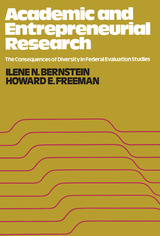
Academic and Entrepreneurial Research
Consequences of Diversity in Federal Evaluation Studies
Ilene Nagel Bernstein
Russell Sage Foundation, 1975
As social action programs in health, education, and welfare have expanded, interest has grown in evaluating their implementation and effectiveness. Policymakers and social planners--at all levels of government and in the private sector--are currently confronted with the problem of evaluating the large number of human service programs that compete for available resources. Academic and Entrepreneurial Research presents a systematic study of the expenditure of federal funds for evaluation research. It reviews federally-supported evaluations of programs, including evaluations of social change experiments and research-demonstration programs funded by the various executive departments of the federal government. Evaluation studies of these large-scale programs vary in scope, quality, and potential utility. Bernstein and Freeman examine all projects initiated during fiscal year 1970 in order to understand better the methods employed, the types of persons engaged in such research, and expectations regarding the utilization of findings. The book provides data about "high" and "low" quality evaluation research and contains recommendations for restructuring the entire evaluation research enterprise in light of the findings.
[more]
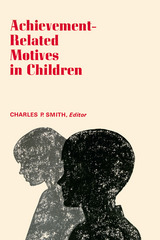
Achievement-Related Motives in Children
Charles P. Smith
Russell Sage Foundation, 1969
Examines the conditions under which motives to achieve are fostered in children. The papers included in this volume reflect the major traditions of research in the field and bring together a set of studies for achieving a better understanding of the ways in which achievement-related personality characteristics develop and function in evaluative or competitive situations.
[more]

Achieving Anew
How New Immigrants Do in American Schools, Jobs, and Neighborhoods
Michael J. White
Russell Sage Foundation, 2009
Can the recent influx of immigrants successfully enter the mainstream of American life, or will many of them fail to thrive and become part of a permanent underclass? Achieving Anew examines immigrant life in school, at work, and in communities and demonstrates that recent immigrants and their children do make substantial progress over time, both within and between generations. From policymakers to private citizens, our national conversation on immigration has consistently questioned the country's ability to absorb increasing numbers of foreign nationals—now nearly one million legal entrants per year. Using census data, longitudinal education surveys, and other data, Michael White and Jennifer Glick place their study of new immigrant achievement within a context of recent developments in assimilation theory and policies regulating who gets in and what happens to them upon arrival. They find that immigrant status itself is not an important predictor of educational achievement. First-generation immigrants arrive in the United States with less education than native-born Americans, but by the second and third generation, the children of immigrants are just as successful in school as native-born students with equivalent social and economic background. As with prior studies, the effects of socioeconomic background and family structure show through strongly. On education attainment, race and ethnicity have a strong impact on achievement initially, but less over time. Looking at the labor force, White and Glick find no evidence to confirm the often-voiced worry that recent immigrants and their children are falling behind earlier arrivals. On the contrary, immigrants of more recent vintage tend to catch up to the occupational status of natives more quickly than in the past. Family background, educational preparation, and race/ethnicity all play a role in labor market success, just as they do for the native born, but the offspring of immigrants suffer no disadvantage due to their immigrant origins. New immigrants continue to live in segregated neighborhoods, though with less prevalence than native black-white segregation. Immigrants who arrived in the 1960s are now much less segregated than recent arrivals. Indeed, the authors find that residential segregation declines both within and across generations. Yet black and Mexican immigrants are more segregated from whites than other groups, showing that race and economic status still remain powerful influences on where immigrants live. Although the picture is mixed and the continuing significance of racial factors remains a concern, Achieving Anew provides compelling reassurance that the recent wave of immigrants is making impressive progress in joining the American mainstream. The process of assimilation is not broken, the advent of a new underclass is not imminent, and the efforts to argue for the restriction of immigration based on these fears are largely mistaken.
[more]

Addiction
Entries and Exits
Jon Elster
Russell Sage Foundation, 1999
Addiction focuses on the emergence, nature, and persistence of addictive behavior, as well as the efforts of addicts to overcome their condition. Do addicts act of their own free will, or are they driven by forces beyond their control? Do structured treatment programs offer more hope for recovery? What causes relapses to occur? Recent scholarship has focused attention on the voluntary aspects of addiction, particularly the role played by choice. Addiction draws upon this new research and the investigations of economists, psychiatrists, philosophers, neuropharmacologists, historians, and sociologists to offer an important new approach to our understanding of addictive behavior. The notion that addicts favor present rewards over future gains or penalties echoes throughout the chapters in Addiction. The effect of cultural values and beliefs on addicts, and on those who treat them, is also explored, particularly in chapters by Elster on alcoholism and by Acker on American heroin addicts in the 1920s and 1930s. Essays by Gardner and by Waal and Mørland discuss the neurobiological roots of addiction Among their findings are evidence that addictive drugs also have an important effect on areas of the central nervous system unrelated to euphoria or dysphoria, and that tolerance and withdrawal phenomena vary greatly from drug to drug. The plight of addicts struggling to regain control of their lives receives important consideration in Addiction. Elster, Skog, and O'Donoghue and Rabin look at self-administered therapies ranging from behavioral modifications to cognitive techniques, and discuss conditions under which various treatment strategies work. Drug-based forms of treatment are discussed by Gardner, drawing on work that suggests that parts of the population have low levels of dopamine, inducing a tendency toward sensation-seeking. There are many different explanations for the impulsive, self-destructive behavior that is addiction. By bringing the triple perspective of neurobiology, choice, and culture to bear on the phenomenon, Addiction offers a unique and valuable source of information and debate on a problem of world-wide proportions.
[more]

Administrative Burden
Policymaking by Other Means
Pamela Herd
Russell Sage Foundation, 2018
Winner of the 2020 Outstanding Book Award Presented by the Public and Nonprofit Section of the National Academy of Management
Winner of the 2019 Louis Brownlow Book Award from the National Academy of Public Administration
Through in-depth case studies of federal programs and controversial legislation, the authors show that administrative burdens are the nuts-and-bolts of policy design. Regarding controversial issues such as voter enfranchisement or abortion rights, lawmakers often use administrative burdens to limit access to rights or services they oppose. For instance, legislators have implemented administrative burdens such as complicated registration requirements and strict voter-identification laws to suppress turnout of African American voters. Similarly, the right to an abortion is legally protected, but many states require women seeking abortions to comply with burdens such as mandatory waiting periods, ultrasounds, and scripted counseling. As Herd and Moynihan demonstrate, administrative burdens often disproportionately affect the disadvantaged who lack the resources to deal with the financial and psychological costs of navigating these obstacles.
However, policymakers have sometimes reduced administrative burdens or shifted them away from citizens and onto the government. One example is Social Security, which early administrators of the program implemented in the 1930s with the goal of minimizing burdens for beneficiaries. As a result, the take-up rate is about 100 percent because the Social Security Administration keeps track of peoples’ earnings for them, automatically calculates benefits and eligibility, and simply requires an easy online enrollment or visiting one of 1,200 field offices. Making more programs and public services operate this efficiently, the authors argue, requires adoption of a nonpartisan, evidence-based metric for determining when and how to institute administrative burdens, with a bias toward reducing them. By ensuring that the public’s interaction with government is no more onerous than it need be, policymakers and administrators can reduce inequality, boost civic engagement, and build an efficient state that works for all citizens.
[more]

Administrative Justice
Advocacy and Change in a Government Agency
Philippe Nonet
Russell Sage Foundation, 1969
Uses the case study of the California Industrial Accident Commission to explore issues in sociological jurisprudence. It traces the progression of the Commission from a welfare agency with broad discretion in policymaking and interpretation into a relatively passive arbitrator of industrial accident claim disputes. The author examines the effect of the elaboration of legal rules and doctrines, the significance of the procedural aspects of law, and the interplay of the legal process and institutional change. He then notes the conditions which will either permit or restrain a legal process that will remain highly responsive to social needs.
[more]
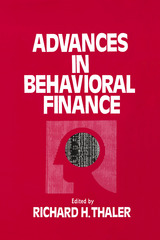
Advances in Behavioral Finance
Richard H. Thaler
Russell Sage Foundation, 1993
Modern financial markets offer the real world's best approximation to the idealized price auction market envisioned in economic theory. Nevertheless, as the increasingly exquisite and detailed financial data demonstrate, financial markets often fail to behave as they should if trading were truly dominated by the fully rational investors that populate financial theories. These markets anomalies have spawned a new approach to finance, one which as editor Richard Thaler puts it, "entertains the possibility that some agents in the economy behave less than fully rationally some of the time." Advances in Behavioral Finance collects together twenty-one recent articles that illustrate the power of this approach. These papers demonstrate how specific departures from fully rational decision making by individual market agents can provide explanations of otherwise puzzling market phenomena. To take several examples, Werner De Bondt and Thaler find an explanation for superior price performance of firms with poor recent earnings histories in the tendencies of investors to overreact to recent information. Richard Roll traces the negative effects of corporate takeovers on the stock prices of the acquiring firms to the overconfidence of managers, who fail to recognize the contributions of chance to their past successes. Andrei Shleifer and Robert Vishny show how the difficulty of establishing a reliable reputation for correctly assessing the value of long term capital projects can lead investment analysis, and hence corporate managers, to focus myopically on short term returns. As a testing ground for assessing the empirical accuracy of behavioral theories, the successful studies in this landmark collection reach beyond the world of finance to suggest, very powerfully, the importance of pursuing behavioral approaches to other areas of economic life. Advances in Behavioral Finance is a solid beachhead for behavioral work in the financial arena and a clear promise of wider application for behavioral economics in the future.
[more]
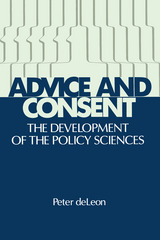
Advice and Consent
The Development of the Policy Sciences
Peter DeLeon
Russell Sage Foundation, 1988
Policy analysis, as a practical matter, is hardly new. Throughout history, rulers have sought advice from priests or sages, and monarchs have conferred with counselors. The emergence of empirical social research in the nineteenth century laid the groundwork for policy advice that was more than an idiosyncratic political exercise, but it was not until well into this century that the systematic examination of policy issues became feasible. Advice and Consent traces the recent course of the "policy sciences," a term coined in 1951 to describe an analytic approach that draws on political science, sociology, law, economics, psychology, and operations research to examine specific social problems in context. Peter deLeon's unique contribution is to delineate two separate but related currents in the development of the policy sciences: first, the evolution of intellectual tools for analysis ("advice"); and second, the evolution of a perceived need for policy research as prompted by events such as the war on poverty ("consent"). Peter deLeon's concise and literate account of how these two trends shaped the policy sciences and affected each other clarifies the present state of policy research, explores its failure to realize fully its ideals, and frames the challenges facing the policy sciences as they struggle to complete their transformation from academic fancy to institutional fact.
[more]
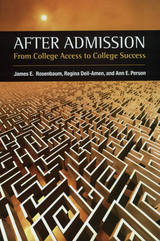
After Admission
From College Access to College Success
James E. Rosenbaum
Russell Sage Foundation, 2006
Enrollment at America's community colleges has exploded in recent years, with five times as many entering students today as in 1965. However, most community college students do not graduate; many earn no credits and may leave school with no more advantages in the labor market than if they had never attended. Experts disagree over the reason for community colleges' mixed record. Is it that the students in these schools are under-prepared and ill-equipped for the academic rigors of college? Are the colleges themselves not adapting to keep up with the needs of the new kinds of students they are enrolling? In After Admission, James Rosenbaum, Regina Deil-Amen, and Ann Person weigh in on this debate with a close look at this important trend in American higher education. After Admission compares community colleges with private occupational colleges that offer accredited associates degrees. The authors examine how these different types of institutions reach out to students, teach them social and cultural skills valued in the labor market, and encourage them to complete a degree. Rosenbaum, Deil-Amen, and Person find that community colleges are suffering from a kind of identity crisis as they face the inherent complexities of guiding their students towards four-year colleges or to providing them with vocational skills to support a move directly into the labor market. This confusion creates administrative difficulties and problems allocating resources. However, these contradictions do not have to pose problems for students. After Admission shows that when colleges present students with clear pathways, students can effectively navigate the system in a way that fits their needs. The occupational colleges the authors studied employed close monitoring of student progress, regular meetings with advisors and peer cohorts, and structured plans for helping students meet career goals in a timely fashion. These procedures helped keep students on track and, the authors suggest, could have the same effect if implemented at community colleges. As college access grows in America, institutions must adapt to meet the needs of a new generation of students. After Admission highlights organizational innovations that can help guide students more effectively through higher education.
[more]

After Ellis Island
Newcomers and Natives in the 1910 Census
Susan Cotts Watkins
Russell Sage Foundation, 1994
After Ellis Island is an unprecedented study of America's foreign-born population at a critical juncture in immigration history. The new century had witnessed a tremendous surge in European immigration, and by 1910 immigrants and their children numbered nearly one third of the U.S. population. The census of that year drew from these newcomers a particularly rich trove of descriptive information, one from which the contributors to After Ellis Island draw to create an unmatched profile of American society in transition. Chapters written especially for this volume explore many aspects of the immigrants' lives, such as where they settled, the jobs they held, how long they remained in school, and whether or not they learned to speak English. More than a demographic catalog, After Ellis Island employs a wide range of comparisons among ethnic groups to probe whether differences in childbirth, child mortality, and education could be traced to cultural or environmental causes. Did differences in schooling levels diminish among groups in the same social and economic circumstances, or did they persist along ethnic lines? Did absorption into mainstream America—measured through duration of U.S. residence, neighborhood mingling, and ability to speak English—blur ethnic differences and increase chances for success? After Ellis Island also shows how immigrants eased the nation's transition from agriculture to manufacturing by providing essential industrial laborers. After Ellis Island offers a major assessment of ethnic diversity in early twentieth century American society. The questions it addresses about assimilation and employment among immigrants in 1910 acquire even greater significance as we observe a renewed surge of foreign arrivals. This volume will be valuable to sociologists and historians of immigration, to demographers and economists, and to all those interested in the relationship of ethnicity to opportunity.
[more]
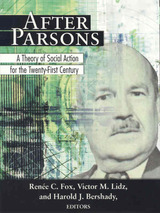
After Parsons
A Theory of Social Action for the Twenty-First Century
Renee C. Fox
Russell Sage Foundation, 2005
Esteemed twentieth-century sociologist Talcott Parsons sought to develop a comprehensive and coherent scheme for sociology that could be applied to every society and historical epoch, and address every aspect of human social organization and culture. His theory of social action has exerted enormous influence across a wide range of social science disciplines. After Parsons, edited by Renée Fox, Victor Lidz, and Harold Bershady, provides a critical reexamination of Parsons' theory in light of historical changes in the world and advances in sociological thought since his death. After Parsons is a fresh examination of Parsons' theoretical undertaking, its significance for social scientific thought, and its implications for present-day empirical research. The book is divided into four parts: Social Institutions and Social Processes; Societal Community and Modernization; Sociology and Culture; and the Human Condition. The chapters deal with Parsons' notions of societal community, societal evolution, and modernization and modernity. After Parsons addresses major themes of enduring relevance, including social differentiation and cultural diversity, social solidarity, universalism and particularism, and trust and affect in social life. The contributors explore these topics in a wide range of social institutions—family and kinship, economy, polity, the law, medicine, art, and religion—and within the context of contemporary developments such as globalization, the power of the United States as an "empireless empire," the emergence of forms of fundamentalism, the upsurge of racial, tribal, and ethnic conflicts, and the increasing occurence of deterministic and positivistic thought. Rather than simply celebrating Parsons and his accomplishments, the contributors to After Parsons rethink and reformulate his ideas to place them on more solid foundations, extend their scope, and strengthen their empirical insights. After Parsons constitutes the work of a distinguished roster of American and European sociologists who find Parsons' theory of action a valuable resource for addressing contemporary issues in sociological theory. All of the essays in this volume take elements of Parsons' theory and critique, adapt, refine, or extend them to gain fresh purchase on problems that confront sociologists today.
[more]

After Prison
Navigating Adulthood in the Shadow of the Justice System
David J. Harding
Russell Sage Foundation, 2020
The incarceration rate in the United States is the highest of any developed nation, with a prison population of approximately 2.3 million in 2016. Over 700,000 prisoners are released each year, and most face significant educational, economic, and social disadvantages. In After Prison, sociologist David Harding and criminologist Heather Harris provide a comprehensive account of young men’s experiences of reentry and reintegration in the era of mass incarceration. They focus on the unique challenges faced by 1,300 black and white youth aged 18 to 25 who were released from Michigan prisons in 2003, investigating the lives of those who achieved some measure of success after leaving prison as well as those who struggled with the challenges of creating new lives for themselves.
The transition to young adulthood typically includes school completion, full-time employment, leaving the childhood home, marriage, and childbearing, events that are disrupted by incarceration. While one quarter of the young men who participated in the study successfully transitioned into adulthood—achieving employment and residential independence and avoiding arrest and incarceration—the same number of young men remained deeply involved with the criminal justice system, spending on average four out of the seven years after their initial release re-incarcerated. Not surprisingly, whites are more likely to experience success after prison. The authors attribute this racial disparity to the increased stigma of criminal records for blacks, racial discrimination, and differing levels of social network support that connect whites to higher quality jobs. Black men earn less than white men, are more concentrated in industries characterized by low wages and job insecurity, and are less likely to remain employed once they have a job.
The authors demonstrate that families, social networks, neighborhoods, and labor market, educational, and criminal justice institutions can have a profound impact on young people’s lives. Their research indicates that residential stability is key to the transition to adulthood. Harding and Harris make the case for helping families, municipalities, and non-profit organizations provide formerly incarcerated young people access to long-term supportive housing and public housing. A remarkably large number of men in this study eventually enrolled in college, reflecting the growing recognition of college as a gateway to living wage work. But the young men in the study spent only brief spells in college, and the majority failed to earn degrees. They were most likely to enroll in community colleges, trade schools, and for-profit institutions, suggesting that interventions focused on these kinds of schools are more likely to be effective. The authors suggest that, in addition to helping students find employment, educational institutions can aid reentry efforts for the formerly incarcerated by providing supports like childcare and paid apprenticeships.
After Prison offers a set of targeted policy interventions to improve these young people’s chances: lifting restrictions on federal financial aid for education, encouraging criminal record sealing and expungement, and reducing the use of incarceration in response to technical parole violations. This book will be an important contribution to the fields of scholarly work on the criminal justice system and disconnected youth.
The transition to young adulthood typically includes school completion, full-time employment, leaving the childhood home, marriage, and childbearing, events that are disrupted by incarceration. While one quarter of the young men who participated in the study successfully transitioned into adulthood—achieving employment and residential independence and avoiding arrest and incarceration—the same number of young men remained deeply involved with the criminal justice system, spending on average four out of the seven years after their initial release re-incarcerated. Not surprisingly, whites are more likely to experience success after prison. The authors attribute this racial disparity to the increased stigma of criminal records for blacks, racial discrimination, and differing levels of social network support that connect whites to higher quality jobs. Black men earn less than white men, are more concentrated in industries characterized by low wages and job insecurity, and are less likely to remain employed once they have a job.
The authors demonstrate that families, social networks, neighborhoods, and labor market, educational, and criminal justice institutions can have a profound impact on young people’s lives. Their research indicates that residential stability is key to the transition to adulthood. Harding and Harris make the case for helping families, municipalities, and non-profit organizations provide formerly incarcerated young people access to long-term supportive housing and public housing. A remarkably large number of men in this study eventually enrolled in college, reflecting the growing recognition of college as a gateway to living wage work. But the young men in the study spent only brief spells in college, and the majority failed to earn degrees. They were most likely to enroll in community colleges, trade schools, and for-profit institutions, suggesting that interventions focused on these kinds of schools are more likely to be effective. The authors suggest that, in addition to helping students find employment, educational institutions can aid reentry efforts for the formerly incarcerated by providing supports like childcare and paid apprenticeships.
After Prison offers a set of targeted policy interventions to improve these young people’s chances: lifting restrictions on federal financial aid for education, encouraging criminal record sealing and expungement, and reducing the use of incarceration in response to technical parole violations. This book will be an important contribution to the fields of scholarly work on the criminal justice system and disconnected youth.
[more]
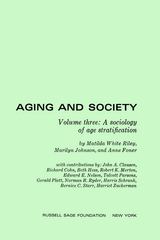
Aging and Society
A Sociology of Age Stratification
Matilda White Riley
Russell Sage Foundation, 1972
Represents the first integrated effort to deal with age as a crucial variable in the social system. Of special interest to sociologists for whom the sociology of age seems destined to become a special field.
[more]
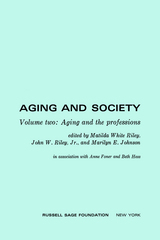
Aging and Society
Aging and the Professions
Matilda White Riley
Russell Sage Foundation, 1969
Interprets the research findings on aging for professionals concerned with the prevention and treatment of problems associated with aging. Each chapter, written by an expert, deals with the field within the broad context of aging in contemporary society.
[more]
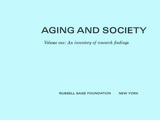
Aging and Society
An Inventory of Research Findings
Matilda White Riley
Russell Sage Foundation, 1968
Selects, condenses, and organizes the entire body of social science research on human beings in their middle and later years. This volume summarizes empirically-tested generalizations from some three thousand research studies.
[more]

Alt-Labor and the New Politics of Workers' Rights
Daniel J. Galvin
Russell Sage Foundation, 2024
Over the last half century, two major developments have transformed the nature of workers’ rights and altered the pathways available to low-wage workers to combat their exploitation. First, while national labor law, which regulates unionization and collective bargaining, has grown increasingly ineffective, employment laws establishing minimal workplace standards have proliferated at the state and local levels. Second, as labor unions have declined, a diversity of small, under-resourced nonprofit “alt-labor” groups have emerged in locations across the United States to organize and support marginalized workers. In Alt-Labor and the New Politics of Workers’ Rights, political scientist Daniel J. Galvin draws on rich data and extensive interviews to examine the links between these developments. With nuance and insight, Galvin explains how alt-labor groups are finding creative ways to help their members while navigating the many organizational challenges and structural constraints they face in this new context.
Alt-labor groups have long offered their members services and organizing opportunities to contest their unfair treatment on the job. But many groups have grown frustrated by the limited impact of these traditional strategies and have turned to public policy to scale up their work. They have successfully led campaigns to combat wage theft, raise the minimum wage, improve working conditions, strengthen immigrants’ rights, and more. These successes present something of a puzzle: relative to their larger, wealthier, and better-connected opponents, alt-labor groups are small, poor, and weak. Their members are primarily low-wage immigrant workers and workers of color who are often socially, economically, and politically marginalized. With few exceptions, the groups lack large dues-paying memberships and are dependent on philanthropic foundations and other unpredictable sources of funding. How, given their myriad challenges, have alt-labor groups managed to make gains for their members?
Galvin reveals that alt-labor groups are leveraging their deep roots in local communities, their unique position in the labor movement, and the flexibility of their organizational forms to build their collective power and extend their reach. A growing number of groups have also become more politically engaged and have set out to alter their political environments by cultivating more engaged citizens, influencing candidate selection processes, and expanding government capacities. These efforts seek to enhance alt-labor groups’ probabilities of success in the near term while incrementally shifting the balance of power over the long term.
Alt-Labor and the New Politics of Workers’ Rights comprehensively details alt-labor’s turn to policy and politics, provides compelling insights into the dilemmas the groups now face, and illuminates how their efforts have both invigorated and complicated the American labor movement.
Alt-labor groups have long offered their members services and organizing opportunities to contest their unfair treatment on the job. But many groups have grown frustrated by the limited impact of these traditional strategies and have turned to public policy to scale up their work. They have successfully led campaigns to combat wage theft, raise the minimum wage, improve working conditions, strengthen immigrants’ rights, and more. These successes present something of a puzzle: relative to their larger, wealthier, and better-connected opponents, alt-labor groups are small, poor, and weak. Their members are primarily low-wage immigrant workers and workers of color who are often socially, economically, and politically marginalized. With few exceptions, the groups lack large dues-paying memberships and are dependent on philanthropic foundations and other unpredictable sources of funding. How, given their myriad challenges, have alt-labor groups managed to make gains for their members?
Galvin reveals that alt-labor groups are leveraging their deep roots in local communities, their unique position in the labor movement, and the flexibility of their organizational forms to build their collective power and extend their reach. A growing number of groups have also become more politically engaged and have set out to alter their political environments by cultivating more engaged citizens, influencing candidate selection processes, and expanding government capacities. These efforts seek to enhance alt-labor groups’ probabilities of success in the near term while incrementally shifting the balance of power over the long term.
Alt-Labor and the New Politics of Workers’ Rights comprehensively details alt-labor’s turn to policy and politics, provides compelling insights into the dilemmas the groups now face, and illuminates how their efforts have both invigorated and complicated the American labor movement.
[more]
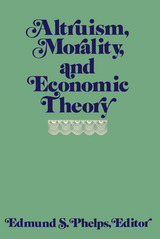
Altruism, Morality, and Economic Theory
Edmund S. Phelps
Russell Sage Foundation, 1975
Presents a collection of papers by economists theorizing on the roles of altruism and morality versus self-interest in the shaping of human behavior and institutions. Specifically, the authors examine why some persons behave in an altruistic way without any apparent reward, thus defying the economist's model of utility maximization. The chapters are accompanied by commentaries from representatives of other disciplines, including law and philosophy.
[more]
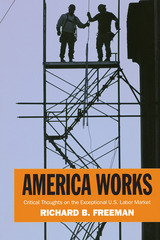
America Works
Thoughts on an Exceptional U.S. Labor Market
Richard B. Freeman
Russell Sage Foundation, 2007
The U.S. labor market is the most laissez faire of any developed nation, with a weak social safety net and little government regulation compared to Europe or Japan. Some economists point to this hands-off approach as the source of America's low unemployment and high per-capita income. But the stagnant living standards and rising economic insecurity many Americans now face take some of the luster off the U.S. model. In America Works, noted economist Richard Freeman reveals how U.S. policies have created a labor market remarkable both for its dynamism and its disparities. America Works takes readers on a grand tour of America's exceptional labor market, comparing the economic institutions and performance of the United States to the economies of Europe and other wealthy countries. The U.S. economy has an impressive track record when it comes to job creation and productivity growth, but it isn't so good at reducing poverty or raising the wages of the average worker. Despite huge gains in productivity, most Americans are hardly better off than they were a generation ago. The median wage is actually lower now than in the early 1970s, and the poverty rate in 2005 was higher than in 1969. So why have the benefits of productivity growth been distributed so unevenly? One reason is that unions have been steadily declining in membership. In Europe, labor laws extend collective bargaining settlements to non-unionized firms. Because wage agreements in America only apply to firms where workers are unionized, American managers have discouraged unionization drives more aggressively. In addition, globalization and immigration have placed growing competitive pressure on American workers. And boards of directors appointed by CEOs have raised executive pay to astronomical levels. Freeman addresses these problems with a variety of proposals designed to maintain the vigor of the U.S. economy while spreading more of its benefits to working Americans. To maintain America's global competitive edge, Freeman calls for increased R&D spending and financial incentives for students pursuing graduate studies in science and engineering. To improve corporate governance, he advocates licensing individuals who serve on corporate boards. Freeman also makes the case for fostering worker associations outside of the confines of traditional unions and for establishing a federal agency to promote profit-sharing and employee ownership. Assessing the performance of the U.S. job market in light of other developed countries' recent history highlights the strengths and weaknesses of the free market model. Written with authoritative knowledge and incisive wit, America Works provides a compelling plan for how we can make markets work better for all Americans. A Volume in the Russell Sage Foundation's Centennial Series
[more]

American Beliefs About Intelligence
Orville G., Jr. Brim
Russell Sage Foundation, 1969
Based on two national surveys--one of adults and one of secondary school students, this volume reports on their experiences with and their attitudes toward standardized tests of intelligence. The authors analyze the relations between a person's beliefs about the nature of intelligence, his estimate of his own intelligence, his attitudes concerning tests, and other personal characteristics.
[more]
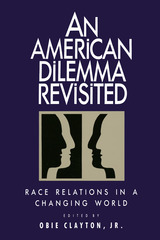
An American Dilemma Revisited
Race Relations in a Changing World
Obie, Jr. Clayton
Russell Sage Foundation, 1996
"This book must be regarded as a greatly important contribution to race relations literature. It is invaluable for the manner in which authors combine the lessons of history with insightful analyses of empirical data to demonstrate patterns of change over the past fifty years in the status of African Americans... Provocative and stimulating reading." —James E. Blackwell, University of Massachusetts, Boston "Presents a wide-ranging reanalysis of the seminal work done by Gunnar Myrdal in 1944, examining virtually every issue that Myrdal noted as relevant to the American race question. In so doing, Clayton and his contributors have brought the matter up to date and shown how the American dilemma continues into the twenty-first century." —Stanford M. Lyman, Florida Atlantic University Fifty years after the publication of An American Dilemma, Gunnar Myrdal's epochal study of racism and black disadvantage, An American Dilemma Revisited again confronts the pivotal issue of race in American society and explores how the status of African Americans has changed over the past half century. African Americans have made critical strides since Myrdal's time. Yet despite significant advances, strong economic and social barriers persist, and in many ways the plight of African Americans remains as acute now as it was then. Using Myrdal as a benchmark, each essay analyzes historical developments, examines current conditions, and investigates strategies for positive change within the core arenas of modern society—political, economic, educational, and judicial. The central question posed by this volume is whether the presence of a disproportionately African American underclass has become a permanent American phenomenon. Several contributors tie the unevenness of black economic mobility to educational limitations, social isolation, and changing workplace demands. The evolution of a more suburban, service-dominated economy that places a premium on advanced academic training has severely constrained the employment prospects of many urban African Americans with limited education. An American Dilemma Revisited argues that there is hope to be found both in black educational institutions, which account for the largest proportion of advanced educational degrees among African Americans, and in the promotion of black community enterprises. An American Dilemma Revisited asks why the election of many African American leaders has failed to translate into genuine political power or effective policy support for black issues. The rise in membership in Pentecostal and Islamic denonimations suggests that many blacks, frustrated with the political detachment of more traditional churches, continue to pursue more socially concerned activism at a local level. Three essays trace social disaffection among blacks to a legacy of police and judicial discrimination. Mistrust of the police persists, particularly in cities, and black offenders continue to experience harsher treatment at all stages of the trial process. As Myrdal's book did fifty years ago, An American Dilemma Revisited offers an insightful look at the continuing effects of racial inequality and discrimination in American society and examines different means for removing the specter of racism in the United States.
[more]
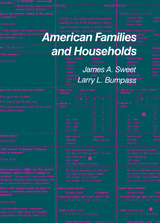
American Families and Households
James A. Sweet
Russell Sage Foundation, 1987
Changes in family and household composition are part of every individual's life course. Childhood families expand and contract; the individual leaves to set up an independent household; he or she may marry, raise children, lose a spouse. These transitions have a profound effect on the economic and social well-being of individuals, and the relative prevalence of different living arrangements affects the very character of society. American families and Households takes advantage of the large samples provided by the decennial censuses to document recent major transformations in the individual life cycle and consequent changes in the composition of the American population. As James Sweet and Larry Bumpass demonstrate, these changes have been dramatic—rates of marriage and childbirth are down, rates of marital disruption are up, and those who can are more likely to maintain independent households despite the rapid acceleration of change during recent years, however, the authors find that contemporary trends are continuous with long-term changes in Western society. This meticulous work makes a significant contribution to our understanding of the American Family and the individual life experiences that are translated into the larger population experience. "Jim Sweet and Larry Bumpass provide detailed descriptions of three components of the households and families of Americans: family transitions; the prevalence of different family and household arrangements; and the economic and social circumstances of people living in different types of families and households....As a reference work, the volume is a gold mine, with many rich veins of useful information....Anyone interested in American families and how they have been changing will want to refer to this volume." —American Journal of Sociology A Volume in the Russell Sage Foundation Census Series
[more]
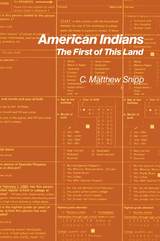
American Indians
The First of This Land
C. Matthew Snipp
Russell Sage Foundation, 1989
Native Americans are too few in number to swing presidential elections, affect national statistics, or attract consistent media attention. But their history illuminates our collective past and their current disadvantaged status reflects our problematic present. In American Indians: The First of This Land, C. Matthew Snipp provides an unrivaled chronicle of the position of American Indians and Alaskan Natives within the larger American society. Taking advantage of recent Census Bureau efforts to collect high-quality data for these groups, Snipp details the composition and characteristics of native Indian and Alaskan populations. His analyses of housing, family structure, language use and education, socioeconomic status, migration, and mortality are based largely on unpublished material not available in any other single source. He catalogs the remarkable diversity of a population—Eskimos, Aleuts, and numerous Indian tribes—once thought doomed to extinction but now making a dramatic comeback, exceeding 1 million for the first time in 300 years. Also striking is the pervasive influence of the federal bureaucracy on the social profile of American Indians, a profile similar at times to that of Third World populations in terms of literacy, income, and living conditions. Comparisons with black and white Americans throughout this study place its findings in perspective and confirm its stature as a benchmark volume. American Indians offers an unsurpassed overview of a minority group that is deeply embedded in American folklore, the first of this land historically but now among the last in its socioeconomic hierarchy. A Volume in the Russell Sage Foundation Census Series
[more]
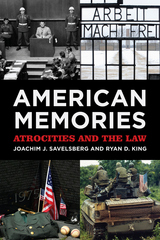
American Memories
Atrocities and the Law
Joachim J. Savelsberg
Russell Sage Foundation, 2012
In the long history of warfare and cultural and ethnic violence, the twentieth century was exceptional for producing institutions charged with seeking accountability or redress for violent offenses and human rights abuses across the globe, often forcing nations to confront the consequences of past atrocities. The Holocaust ended with trials at Nuremberg, apartheid in South Africa concluded with the Truth and Reconciliation Commission, and the Gacaca courts continue to strive for closure in the wake of the Rwandan genocide. Despite this global trend toward accountability, American collective memory appears distinct in that it tends to glorify the nation’s past, celebrating triumphs while eliding darker episodes in its history. In American Memories, sociologists Joachim Savelsberg and Ryan King rigorously examine how the United States remembers its own and others’ atrocities and how institutional responses to such crimes, including trials and tribunals, may help shape memories and perhaps impede future violence. American Memories uses historical and media accounts, court records, and survey research to examine a number of atrocities from the nation’s past, including the massacres of civilians by U.S. military in My Lai, Vietnam, and Haditha, Iraq. The book shows that when states initiate responses to such violence—via criminal trials, tribunals, or reconciliation hearings—they lay important groundwork for how such atrocities are viewed in the future. Trials can serve to delegitimize violence—even by a nation’s military— by creating a public record of grave offenses. But the law is filtered by and must also compete with other institutions, such as the media and historical texts, in shaping American memory. Savelsberg and King show, for example, how the My Lai slayings of women, children, and elderly men by U.S. soldiers have been largely eliminated from or misrepresented in American textbooks, and the army’s reputation survived the episode untarnished. The American media nevertheless evoked the killings at My Lai in response to the murder of twenty-four civilian Iraqis in Haditha, during the war in Iraq. Since only one conviction was obtained for the My Lai massacre, and convictions for the killings in Haditha seem increasingly unlikely, Savelsberg and King argue that Haditha in the near past is now bound inextricably to My Lai in the distant past. With virtually no criminal convictions, and none of higher ranks for either massacre, both events will continue to be misrepresented in American memory. In contrast, the book examines American representations of atrocities committed by foreign powers during the Balkan wars, which entailed the prosecution of ranking military and political leaders. The authors analyze news accounts of the war’s events and show how articles based on diplomatic sources initially cast Serbian President Slobodan Milosevic in a less negative light, but court-based accounts increasingly portrayed Milosevic as a criminal, solidifying his image for the public record. American Memories provocatively suggests that a nation’s memories don’t just develop as a rejoinder to events—they are largely shaped by institutions. In the wake of atrocities, how a state responds has an enduring effect and provides a moral framework for whether and how we remember violent transgressions. Savelsberg and King deftly show that such responses can be instructive for how to deal with large-scale violence in the future, and hopefully how to deter it. A Volume in the American Sociological Association’s Rose Series in Sociology.
[more]
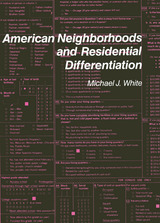
American Neighborhoods and Residential Differentiation
Michael J. White
Russell Sage Foundation, 1987
Residential patterns are reflections of social structure; to ask, "who lives in which neighborhoods," is to explore a sorting-out process that is based largely on socioeconomic status, ethnicity, and life cycle characteristics. This benchmark volume uses census data, with its uniquely detailed information on small geographic areas, to bring into focus the familiar yet often vague concept of neighborhood. Michael White examines nearly 6,000 census tracts (approximating neighborhoods) in twenty-one representative metropolitan areas, from Atlanta to Salt Lake City, Newark to San Diego. The availability of statistics spanning several decades and covering a wide range of demographic characteristics (including age, race, occupation, income, and housing quality) makes possible a rich analysis of the evolution and implications of differences among neighborhoods. In this complex mosaic, White finds patterns and traces them over time—showing, for example, how racial segregation has declined modestly while socioeconomic segregation remains constant, and how population diffusion gradually affects neighborhood composition. His assessment of our urban settlement system also illuminates the social forces that shape contemporary city life and the troubling policy issues that plague it. A Volume in the Russell Sage Foundation Census Series
[more]

The American Non-Dilemma
Racial Inequality Without Racism
Nancy DiTomaso
Russell Sage Foundation, 2013
The Civil Rights movement of the 1960s seemed to mark a historical turning point in advancing the American dream of equal opportunity for all citizens, regardless of race. Yet 50 years on, racial inequality remains a troubling fact of life in American society and its causes are highly contested. In The American Non-Dilemma, sociologist Nancy DiTomaso convincingly argues that America's enduring racial divide is sustained more by whites' preferential treatment of members of their own social networks than by overt racial discrimination. Drawing on research from sociology, political science, history, and psychology, as well as her own interviews with a cross-section of non-Hispanic whites, DiTomaso provides a comprehensive examination of the persistence of racial inequality in the post-Civil Rights era and how it plays out in today's economic and political context. Taking Gunnar Myrdal's classic work on America's racial divide, The American Dilemma, as her departure point, DiTomaso focuses on "the white side of the race line." To do so, she interviewed a sample of working, middle, and upper-class whites about their life histories, political views, and general outlook on racial inequality in America. While the vast majority of whites profess strong support for civil rights and equal opportunity regardless of race, they continue to pursue their own group-based advantage, especially in the labor market where whites tend to favor other whites in securing jobs protected from market competition. This "opportunity hoarding" leads to substantially improved life outcomes for whites due to their greater access to social resources from family, schools, churches, and other institutions with which they are engaged. DiTomaso also examines how whites understand the persistence of racial inequality in a society where whites are, on average, the advantaged racial group. Most whites see themselves as part of the solution rather than part of the problem with regard to racial inequality. Yet they continue to harbor strong reservations about public policies—such as affirmative action—intended to ameliorate racial inequality. In effect, they accept the principles of civil rights but not the implementation of policies that would bring about greater racial equality. DiTomaso shows that the political engagement of different groups of whites is affected by their views of how civil rights policies impact their ability to provide advantages to family and friends. This tension between civil and labor rights is evident in Republicans' use of anti-civil rights platforms to attract white voters, and in the efforts of Democrats to bridge race and class issues, or civil and labor rights broadly defined. As a result, DiTomaso finds that whites are, at best, uncertain allies in the fight for racial equality. Weaving together research on both race and class, along with the life experiences of DiTomaso's interview subjects, The American Non-Dilemma provides a compelling exploration of how racial inequality is reproduced in today's society, how people come to terms with the issue in their day-to-day experiences, and what these trends may signify in the contemporary political landscape.
[more]
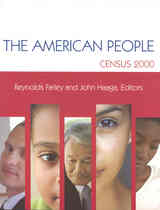
The American People
Census 2000
Reynolds Farley
Russell Sage Foundation, 2005
For more than 200 years, America has turned to the decennial census to answer questions about itself. More than a mere head count, the census is the authoritative source of information on where people live, the types of families they establish, how they identify themselves, the jobs they hold, and much more. The latest census, taken at the cusp of the new millennium, gathered more information than ever before about Americans and their lifestyles. The American People, edited by respected demographers Reynolds Farley and John Haaga, provides a snapshot of those findings that is at once analytically rich and accessible to readers at all levels. The American People addresses important questions about national life that census data are uniquely able to answer. Mary Elizabeth Hughes and Angela O'Rand compare the educational attainment, economic achievement, and family arrangements of the baby boom cohort with those of preceding generations. David Cotter, Joan Hermsen, and Reeve Vanneman find that, unlike progress made in previous decades, the 1990s were a time of stability—and possibly even retrenchment—with regard to gender equality. Sonya Tafoya, Hans Johnson, and Laura Hill examine a new development for the census in 2000: the decision to allow people to identify themselves by more than one race. They discuss how people form multiracial identities and dissect the racial and ethnic composition of the roughly seven million Americans who chose more than one racial classification. Former Census Bureau director Kenneth Prewitt discusses the importance of the census to democratic fairness and government efficiency, and notes how the high stakes accompanying the census count (especially the allocation of Congressional seats and federal funds) have made the census a lightening rod for criticism from politicians. The census has come a long way since 1790, when U.S. Marshals setout on horseback to count the population. Today, it holds a wealth of information about who we are, where we live, what we do, and how much we have changed. The American People provides a rich, detailed examination of the trends that shape our lives and paints a comprehensive portrait of the country we live in today. A Volume in the Russell Sage Foundation Census Series
[more]
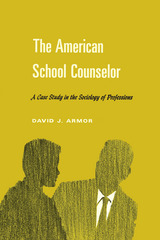
The American School Counselor
A Case Study in the Sociology of Professions
David J. Armor
Russell Sage Foundation, 1969
A comprehensive case study of secondary school counseling as a developing profession. The author examines the growth of counseling, the characteristics of the contemporary counselor, the use of standardized tests, the changing orientation of the counselor from "educational advisor" to "therapist," the influences of the institutional setting on counseling, and the impact of counseling on students and society.
[more]
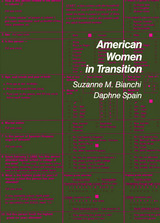
American Women in Transition
Suzanne M. Bianchi
Russell Sage Foundation, 1986
This is the first in a series of eighteen projected volumes, to be published over the next two years, aimed at converting the vast statistical yield of the 1980 Census into authoritative analyses of major changes and trends in American life. A collaborative research effort, funded by public and private foundations, this series revives a tradition of independent Census analysis (the last such project was undertaken in 1960) and offers an unparalleled array of studies on various ethnic, geographic, and status dimensions of the U.S. population. It is entirely appropriate that the inaugural volume in this series should document trends in the status of American women. Dramatic social and demographic changes over the past two decades make American Women in Transition a landmark, an invaluable one-volume summary and assessment of women's move from the private domain to the public. Clearly and in detail, the authors describe women's increasing educational attainment and labor force participation, their lagging earning power, their continued commitment to marriage and family, and the "balancing act" necessitated by this overlap of roles. Supplementing 1980 Census data with even more recent surveys from the Census Bureau and other federal agencies, Bianchi and Spain are able to extend these trends into the 1980s and sketch the complex challenges posed by such lasting and historic changes. This definitive and sensitive study is certain to become a standard reference work on American women today, and an essential foundation for future scholarship and policy concerning the status of women in our society. A Volume in the Russell Sage Foundation Census Series
[more]
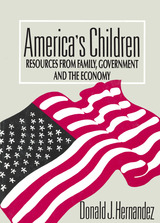
America's Children
Resources from Family, Government, and the Economy
Donald J. Hernandez
Russell Sage Foundation, 1993
America's Children offers a valuable overview of the dramatic transformations in American childhood over the past fifty years, a period of historic shifts that reduced the human and material resources available to our children. Alarmingly, one fifth of all U.S. children now grow up in poverty, many are without health insurance, and about 30 percent never graduate from high school. Despite such conditions, economic, family, and educational programs for children earn low national priority and must depend on inconsistent state and local management. Drawing upon both historical and recent data, including census information from 1940 to 1980, Donald J. Hernandez provides a vivid portrait of children in America and puts forth a forceful case for overhauling our national child welfare policies. Hernandez shows how important revolutions in household composition and income, parental education and employment, childcare, and levels of poverty have affected children's well-being. As working wives and single mothers increasingly replace the traditional homemaker, children spend greater portions of time in educational and daycare facilities outside the home, and those with single mothers stand the greatest chance of being welfare dependent. Wider changes in society have created even greater stress for children in certain groups as they age: out-of-wedlock births are on the rise for white teenagers, half of all Hispanic youths never graduate high school, and violence accounts for nearly 90 per cent of all black teenage deaths. America's Children explores the interaction of many trends in children's lives and the fundamental social, demographic, and economic processes that lie at their core. The book concludes with a thoughtful analysis of the ability of families and government to provide for a new age of children, with emphasis on reducing racial inequities and providing greater public support for families, comparable to the family policies of other developed countries. As the traditional "Ozzie and Harriet" family recedes into collective memory, the importance of creating strong national policies for children is amplified, particularly in the areas of financial assistance, health insurance, education, and daycare. America's Children provides a compelling guide for reassessing the forces that shape our children and the resources available to safeguard their future. "In this conceptually creative, methodologically rigorous, and empirically rich book, Hernandez uses census and survey data to describe several quite profound changes that have characterized the life courses of America's children and their families over the last 50 to 150 years....this erudite book is destined to be a classic." —Richard M. Lerner, Contemporary Psychology "America's Children goes a long way toward informing the debate on the causes of increasing poverty, and it challenges some widely held misperceptions....its study of resources available to children (and their families) lays a valuable foundation for surveying trends in family structure, education, and income sources....Anyone interested in the changing lives of children should read it; anyone interested in understanding the causes and patterns of poverty, and in designing a better welfare system, must read it." —Ellen B. Magenheim, Journal of Policy Analysis and Management A Volume in the Russell Sage Foundation Census Series
[more]
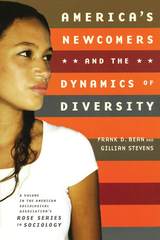
America's Newcomers and the Dynamics of Diversity
Frank D. Bean
Russell Sage Foundation, 2003
The attacks of September 11, 2001, facilitated by easy entry and lax immigration controls, cast into bold relief the importance and contradictions of U.S. immigration policy. Will we have to restrict immigration for fear of future terrorist attacks? On a broader scale, can the country's sense of national identity be maintained in the face of the cultural diversity that today's immigrants bring? How will the resulting demographic, social, and economic changes affect U.S. residents? As the debate about immigration policy heats up, it has become more critical than ever to examine immigration's role in our society. With a comprehensive social scientific assessment of immigration over the past thirty years, America's Newcomers and the Dynamics of Diversity provides the clearest picture to date of how immigration has actually affected the United States, while refuting common misconceptions and predicting how it might affect us in the future. Frank Bean and Gillian Stevens show how, on the whole, immigration has been beneficial for the United States. Although about one million immigrants arrive each year, the job market has expanded sufficiently to absorb them without driving down wages significantly or preventing the native-born population from finding jobs. Immigration has not led to welfare dependency among immigrants, nor does evidence indicate that welfare is a magnet for immigrants. With the exception of unauthorized Mexican and Central American immigrants, studies show that most other immigrant groups have attained sufficient earnings and job mobility to move into the economic mainstream. Many Asian and Latino immigrants have established ethnic networks while maintaining their native cultural practices in the pursuit of that goal. While this phenomenon has led many people to believe that today's immigrants are slow to enter mainstream society, Bean and Stevens show that intermarriage and English language proficiency among these groups are just as high—if not higher—as among prior waves of European immigrants. America's Newcomers and the Dynamics of Diversity concludes by showing that the increased racial and ethnic diversity caused by immigration may be helping to blur the racial divide in the United States, transforming the country from a biracial to multi-ethnic and multi-racial society. Replacing myth with fact, America's Newcomers and the Dynamics of Diversity contains a wealth of information and belongs on the bookshelves of policymakers, pundits, scholars, students, and anyone who is concerned about the changing face of the United States. A Volume in the American Sociological Association's Rose Series in Sociology
[more]
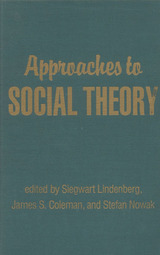
Approaches to Social Theory
Stewart Lindenberg
Russell Sage Foundation, 1986
Many social scientists lament the increasing fragmentation of their discipline, the trend toward specialization and away from engagement with overarching issues. Opportunities to transcend established subdisciplinary boundaries are rare, but the extraordinary conference that gave rise to this volume was one such occasion. The W. I. Thomas and Florian Znaniecki Memorial Conference on Social Theory, held at the University of Chicago, brought together an outstanding array of scholars representing a variety of contending approaches to social theory. In panels, presentations, and general discussions, these scholars confronted one another in the context of an entire range of approaches. But as readers of this deftly edited collection will discover, the conference was more than a forum for abstract theoretical debate. These papers and discussions represent original scholarly contributions that exemplify orientations to social theory by examining real problems in the functioning of society—from large-scale economic growth and decline to the dynamics of interpersonal interaction. By exploring a few central issues in different ways, this unique conference worked through some lively theoretical incompatibilities and established genuine potential for communication, for complementary and collaborative effort at the core of sociology. The excitement of that dialogue, and the intellectual vitality it generated, are captured for the reader in Approaches to Social Theory. "Meaty presentations and confrontations of ideas by people whose views we respect...Recommended to anyone interested in the current state of social theory." —Contemporary Sociology
[more]
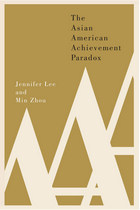
The Asian American Achievement Paradox
JENIFFER LEE is professor of sociology at the University of California, Irvine. MIN ZHOU is professor of sociology at Nanyang Technological University, Singapore, and the University of California, Los Angeles.
Russell Sage Foundation, 2015
Asian Americans are often stereotyped as the “model minority.” Their sizeable presence at elite universities and high household incomes have helped construct the narrative of Asian American “exceptionalism.” While many scholars and activists characterize this as a myth, pundits claim that Asian Americans’ educational attainment is the result of unique cultural values. In The Asian American Achievement Paradox, sociologists Jennifer Lee and Min Zhou offer a compelling account of the academic achievement of the children of Asian immigrants. Drawing on in-depth interviews with the adult children of Chinese immigrants and Vietnamese refugees and survey data, Lee and Zhou bridge sociology and social psychology to explain how immigration laws, institutions, and culture interact to foster high achievement among certain Asian American groups. For the Chinese and Vietnamese in Los Angeles, Lee and Zhou find that the educational attainment of the second generation is strikingly similar, despite the vastly different socioeconomic profiles of their immigrant parents. Because immigration policies after 1965 favor individuals with higher levels of education and professional skills, many Asian immigrants are highly educated when they arrive in the United States. They bring a specific “success frame,” which is strictly defined as earning a degree from an elite university and working in a high-status field. This success frame is reinforced in many local Asian communities, which make resources such as college preparation courses and tutoring available to group members, including their low-income members. While the success frame accounts for part of Asian Americans’ high rates of achievement, Lee and Zhou also find that institutions, such as public schools, are crucial in supporting the cycle of Asian American achievement. Teachers and guidance counselors, for example, who presume that Asian American students are smart, disciplined, and studious, provide them with extra help and steer them toward competitive academic programs. These institutional advantages, in turn, lead to better academic performance and outcomes among Asian American students. Yet the expectations of high achievement come with a cost: the notion of Asian American success creates an “achievement paradox” in which Asian Americans who do not fit the success frame feel like failures or racial outliers. While pundits ascribe Asian American success to the assumed superior traits intrinsic to Asian culture, Lee and Zhou show how historical, cultural, and institutional elements work together to confer advantages to specific populations. An insightful counter to notions of culture based on stereotypes, The Asian American Achievement Paradox offers a deft and nuanced understanding how and why certain immigrant groups succeed.
[more]
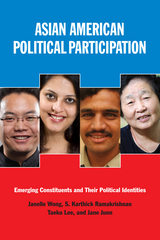
Asian American Political Participation
Emerging Constituents and Their Political Identities
Janelle S. Wong
Russell Sage Foundation, 2012
Asian Americans are a small percentage of the U.S. population, but their numbers are steadily rising—from less than a million in 1960 to more than 15 million today. They are also a remarkably diverse population—representing several ethnicities, religions, and languages—and they enjoy higher levels of education and income than any other U.S. racial group. Historically, socioeconomic status has been a reliable predictor of political behavior. So why has this fast-growing American population, which is doing so well economically, been so little engaged in the U.S. political system? Asian American Political Participation is the most comprehensive study to date of Asian American political behavior, including such key measures as voting, political donations, community organizing, and political protests. The book examines why some groups participate while others do not, why certain civic activities are deemed preferable to others, and why Asian socioeconomic advantage has so far not led to increased political clout. Asian American Political Participation is based on data from the authors’ groundbreaking 2008 National Asian American Survey of more than 5,000 Chinese, Indian, Vietnamese, Korean, Filipino, and Japanese Americans. The book shows that the motivations for and impediments to political participation are as diverse as the Asian American population. For example, native-born Asians have higher rates of political participation than their immigrant counterparts, particularly recent adult arrivals who were socialized outside of the United States. Protest activity is the exception, which tends to be higher among immigrants who maintain connections abroad and who engaged in such activity in their country of origin. Surprisingly, factors such as living in a new immigrant destination or in a city with an Asian American elected official do not seem to motivate political behavior—neither does ethnic group solidarity. Instead, hate crimes and racial victimization are the factors that most motivate Asian Americans to participate politically. Involvement in non-political activities such as civic and religious groups also bolsters political participation. Even among Asian groups, socioeconomic advantage does not necessarily translate into high levels of political participation. Chinese Americans, for example, have significantly higher levels of educational attainment than Japanese Americans, but Japanese Americans are far more likely to vote and make political contributions. And Vietnamese Americans, with the lowest levels of education and income, vote and engage in protest politics more than any other group. Lawmakers tend to favor the interests of groups who actively engage the political system, and groups who do not participate at high levels are likely to suffer political consequences in the future. Asian American Political Participation demonstrates that understanding Asian political behavior today can have significant repercussions for Asian American political influence tomorrow.
[more]
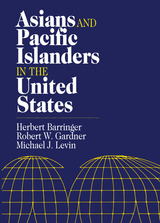
Asians and Pacific Islanders in the United States
Herbert Barringer
Russell Sage Foundation, 1993
Asians and Pacific Islanders in the United States examines in comprehensive detail the most rapidly growing and quickly changing minority group in the United States. Once a small population, this group is now recognized by official census counts and by society as a diverse people, comprised of Japanese, Chinese, Koreans, Filipinos, Hawaiians, Samoans, and many other heritages. However, the conception that Asians are a single and successful model minority still exists, though they are in fact a complex and multidimensional people still struggling in the pursuit of the American dream. "...a major addition to the literature on recent immigration. The book is lucidly written by three demographers eager to convey their findings and analyses to general readers as well as to fellow professionals. It provides easily accessible information and useful commentary, making it an excellent resource for anyone interested in those groups now lumped together under a single Census Bureau rubric." —Choice "This is a demographer's delight....The major question addressed in this book is: How well are the new Asian immigrants adapting to American society? Barringer, Gardner, and Levin cogently argue and convincingly demonstrate that the response to the question is much more complex than suggested by articles in the popular press....an important book and highly recommended." —Contemporary Sociology "For the real scoop on the state of Asian America, turn to the Russell Sage Foundation's excellent Asians and Pacific Islanders of the United States. The best demographic overview, it makes a strong case for Asian-American success without overlooking genuine problems." —Reason "...a comprehensive study of the size, diversity, and complexity of the Asian and Pacific Islander populations based on the 1980 census and subsequent mid-census assessments prior to the 1990 census....sheds a particularly interesting light on the shifting nature of recent Asian and Pacific Islander immigration and the related but often undocumented secondary movement of populations after arrival." —The Annals of the American Academy of Political and Social Science A Volume in the Russell Sage Foundation Census Series
[more]
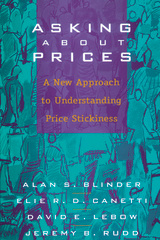
Asking About Prices
A New Approach to Understanding Price Stickiness
Alan Blinder
Russell Sage Foundation, 1998
Why do consumer prices and wages adjust so slowly to changes in market conditions? The rigidity or stickiness of price setting in business is central to Keynesian economic theory and a key to understanding how monetary policy works, yet economists have made little headway in determining why it occurs. Asking About Prices offers a groundbreaking empirical approach to a puzzle for which theories abound but facts are scarce. Leading economist Alan Blinder, along with co-authors Elie Canetti, David Lebow, and Jeremy B. Rudd, interviewed a national, multi-industry sample of 200 CEOs, company heads, and other corporate price setters to test the validity of twelve prominent theories of price stickiness. Using everyday language and pertinent scenarios, the carefully designed survey asked decisionmakers how prominently these theoretical concerns entered into their own attitudes and thought processes. Do businesses tend to view the costs of changing prices as prohibitive? Do they worry that lower prices will be equated with poorer quality goods? Are firms more likely to try alternate strategies to changing prices, such as warehousing excess inventory or improving their quality of service? To what extent are prices held in place by contractual agreements, or by invisible handshakes? Asking About Prices offers a gold mine of previously unavailable information. It affirms the widespread presence of price stickiness in American industry, and offers the only available guide to such business details as what fraction of goods are sold by fixed price contract, how often transactions involve repeat customers, and how and when firms review their prices. Some results are surprising: contrary to popular wisdom, prices do not increase more easily than they decrease, and firms do not appear to practice anticipatory pricing, even when they can foresee cost increases. Asking About Prices also offers a chapter-by-chapter review of the survey findings for each of the twelve theories of price stickiness. The authors determine which theories are most popular with actual price setters, how practices vary within different business sectors, across firms of different sizes, and so on. They also direct economists' attention toward a rationale for price stickiness that does not stem from conventional theory, namely a strong reluctance by firms to antagonize or inconvenience their customers. By illuminating how company executives actually think about price setting, Asking About Prices provides an elegant model of a valuable new approach to conducting economic research.
[more]
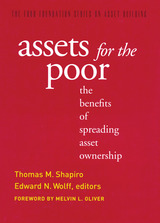
Assets for the Poor
The Benefits of Spreading Asset Ownership
Thomas M. Shapiro
Russell Sage Foundation, 2001
Over the past three decades, average household wealth in the United States has declined among all but the richest families, with a near 80 percent drop among the nation's poorest families. Although the national debate about inequality has focused on income, it is wealth—the private assets amassed and passed on within families—that provides the extra economic cushion needed to move beyond mere day-to-day survival. Assets for the Poor is the first full-scale investigation into the importance of family wealth and the need for policies to encourage asset-building among the poor. Assets for the Poor shows how institutional mechanisms designed to encourage acquisition of capital and property favor middle-class and high-income families. For example, the aggregate value of home mortgage tax deductions far outweighs the dollar amount of the subsidies provided by Section 8 rental vouchers and public housing. Banking definitions of creditworthiness largely exclude minorities, and welfare rules have made it nearly impossible for single mothers to accumulate savings, let alone stocks or real estate. Due to persistent residential segregation, even those minority families who do own homes are often denied equal access to better schools and public services. The research in this volume shows that the poor do make use of the assets they have. Cash gifts—although small in size—are frequent within families and often lead to such positive results as homebuying and debt reduction, while tangible assets such as tools and cars help increase employment prospects. Assets for the Poor examines policies such as Individual Development Account tax subsidies to reward financial savings among the poor, and more liberal credit rules to make borrowing easier and less costly. The contributors also offer thoughtful advice for bringing the poor into mainstream savings institutions and warn against developing asset building policies at the expense of existing safety net programs. Asset-building for low-income families is a powerful idea that offers hope to families searching for a way out of poverty. Assets for the Poor challenges current thinking regarding poverty reduction policies and proposes a major shift in the way we think about families and how they make a better life. A Volume in the Ford Foundation Series on Asset Building
[more]
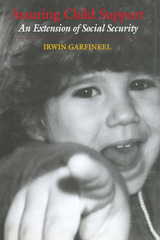
Assuring Child Support
An Extension of Social Security
Irwin Garfinkel
Russell Sage Foundation, 1992
In the United States, rates of divorce and out-of-wedlock childbirth are climbing so dramatically that over half of the next generation is likely to spend part of its childhood in single-mother families. As many as half of these families will live in poverty, caused in large measure by the failure of current government regulations to secure adequate child support from absent parents and to assure minimum support when parents cannot provide it. Assuring Child Support introduces the Child Support Assurance System, a remedy to this problem that is both feasible and affordable, a practical reform that is within the nation's grasp. "An extremely well-written and provocative book." —Eastern Economic Journal
[more]
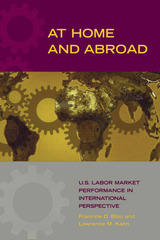
At Home and Abroad
U.S. Labor Market Performance in International Perspective
Francine D. Blau
Russell Sage Foundation, 2002
Throughout the latter part of the 20th century, the U.S. labor market performed differently than the labor markets of the world's other advanced industrialized societies. In the early 1970s, the United States had higher unemployment rates than its Western European counterparts. But after two oil crises, rapid technological change, and globalization rocked the world's economies, unemployment fell in the United States, while increasing dramatically in other nations. At the same time, wage inequality widened more in the United States than in Europe. In At Home and Abroad, Cornell University economists Francine D. Blau and Lawrence M. Kahn examine the reasons for these striking dissimilarities between the United States and its economic allies. Comparing countries, the authors find that governments and unions play a far greater role in the labor market in Europe than they do in the United States. It is much more difficult to lay off workers in Europe than in the United States, unemployment insurance is more generous in Europe, and many fewer Americans than Europeans are covered by collective bargaining agreements. Interventionist labor market institutions in Europe compress wages, thus contributing to the lower levels of wage inequality in the European Union than in the United States. Using a unique blend of microeconomic and microeconomic analyses, the authors assess how these differences affect wage and unemployment levels. In a lucid narrative, they present ample evidence that, as upheavals shook the global economy, the flexible U.S. market let wages adjust so that jobs could be maintained, while more rigid European economies maintained wages at the cost of losing jobs. By helping readers understand the relationship between different economic responses and outcomes, At Home and Abroad makes an invaluable contribution to the continuing debate about the role institutions can and should play in creating jobs and maintaining living standards.
[more]

Atlanta Paradox
David L. Sjoquist
Russell Sage Foundation, 2000
Despite the rapid creation of jobs in the greater Atlanta region, poverty in the city itself remains surprisingly high, and Atlanta's economic boom has yet to play a significant role in narrowing the gap between the suburban rich and the city poor. This book investigates the key factors underlying this paradox. The authors show that the legacy of past residential segregation as well as the more recent phenomenon of urban sprawl both work against inner city blacks. Many remain concentrated near traditional black neighborhoods south of the city center and face prohibitive commuting distances now that jobs have migrated to outlying northern suburbs. The book also presents some promising signs. Few whites still hold overt negative stereotypes of blacks, and both whites and blacks would prefer to live in more integrated neighborhoods. The emergence of a dynamic, black middle class and the success of many black-owned businesses in the area also give the authors reason to hope that racial inequality will not remain entrenched in a city where so much else has changed. A Volume in the Multi-City Study of Urban Inequality
[more]
READERS
Browse our collection.
PUBLISHERS
See BiblioVault's publisher services.
STUDENT SERVICES
Files for college accessibility offices.
UChicago Accessibility Resources
home | accessibility | search | about | contact us
BiblioVault ® 2001 - 2024
The University of Chicago Press


